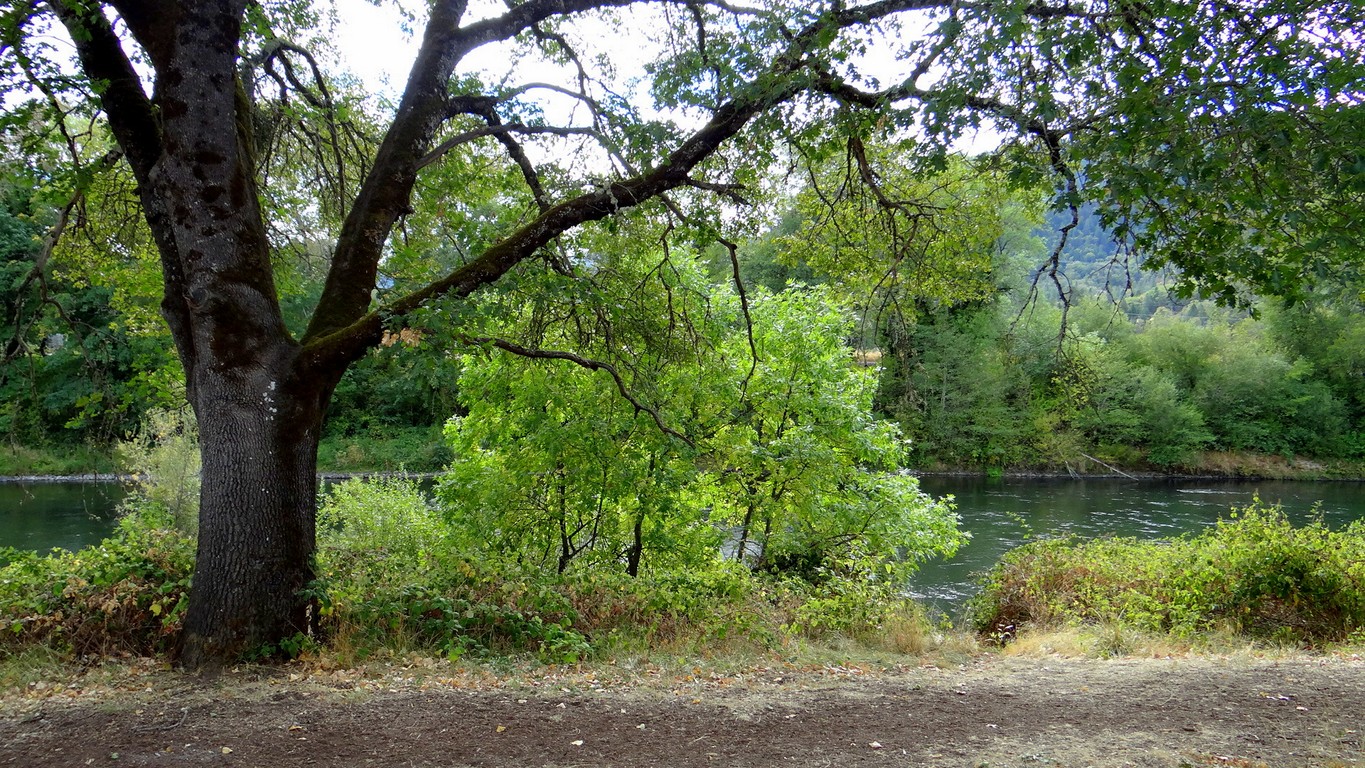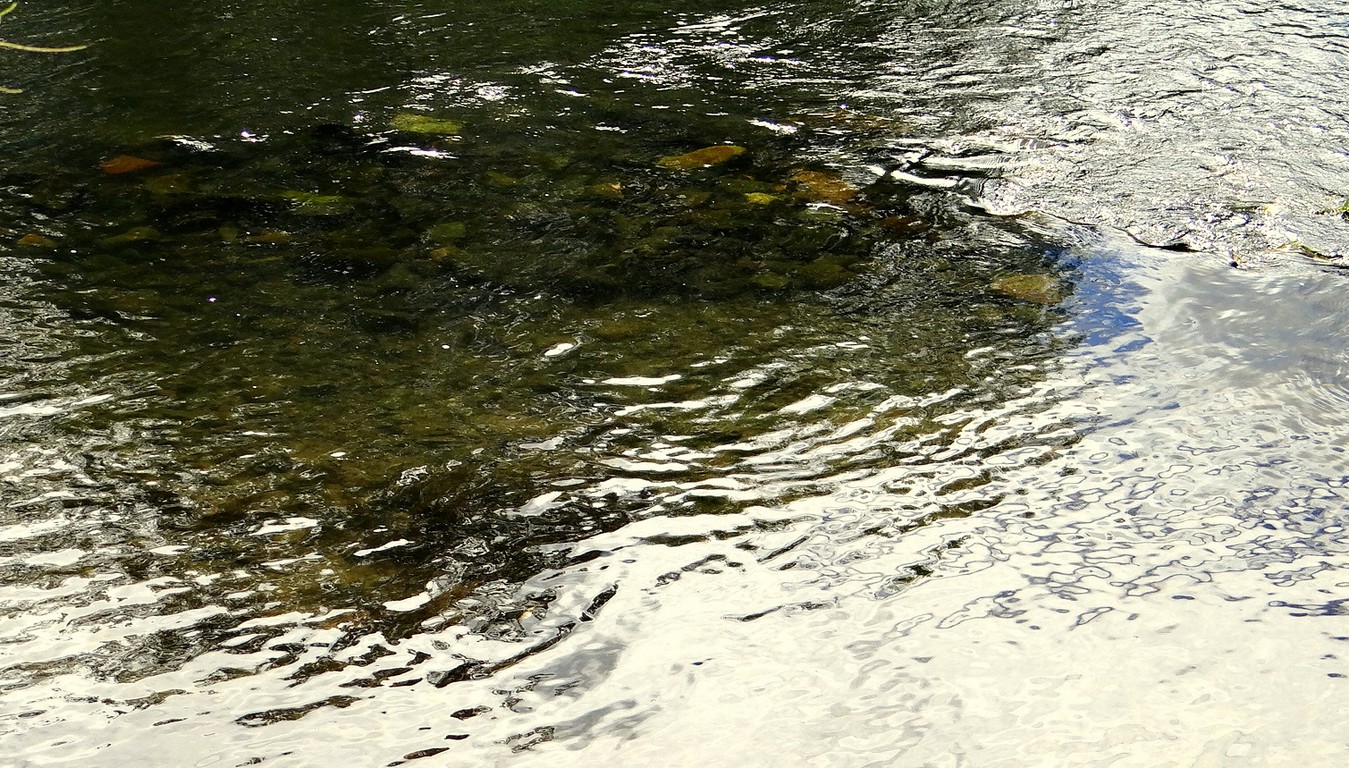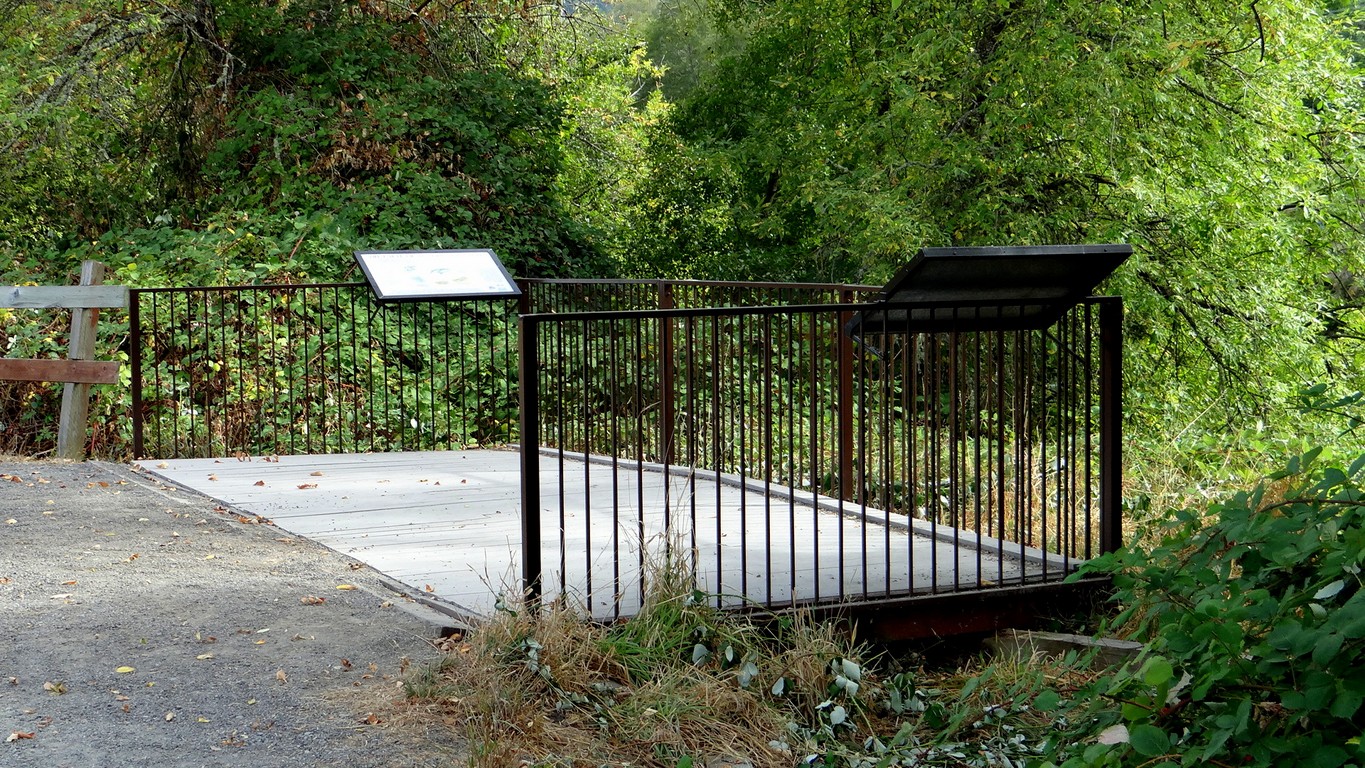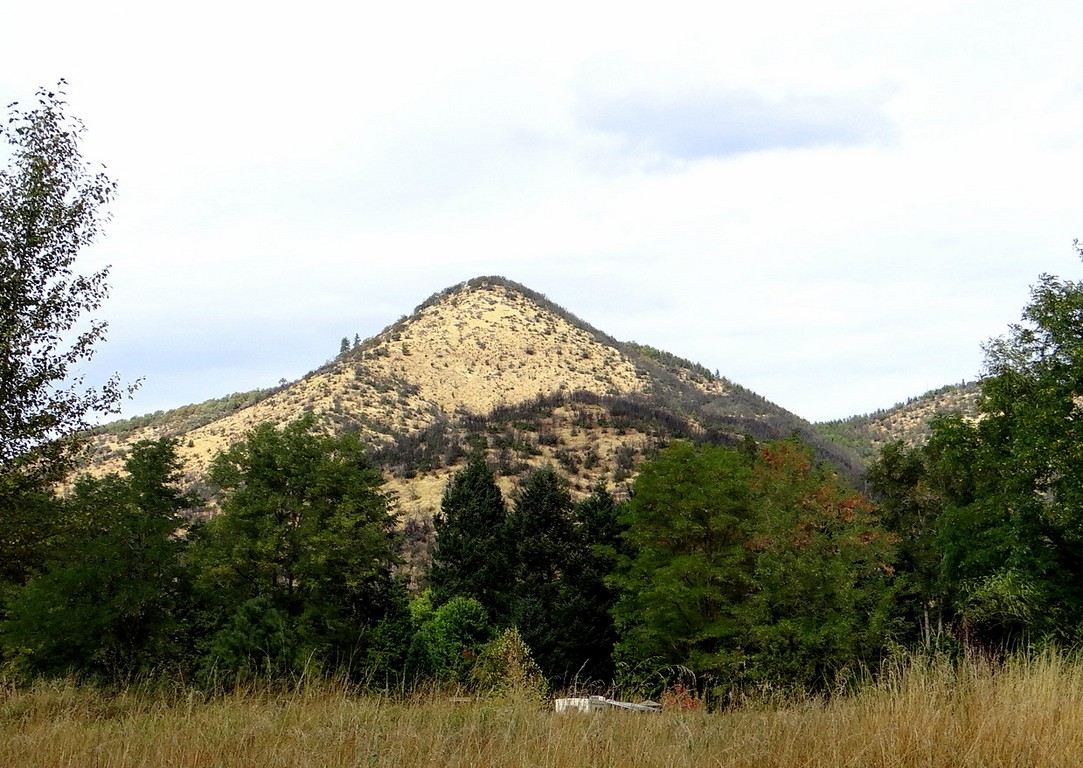
The weather was perfect, warm and balmy with a lovely breeze blowing off the river. We are staying at the Valley of the Rogue State Park with walking trails next to the mighty Rogue River. It was protected as a wild and scenic river under the 1968 Wild and Scenic Rivers Act. Located in southwestern Oregon, it flows 215 miles from Crater Lake to the Pacific Ocean. The 84 mile, Congressionally designated "National Wild and Scenic" portion of the Rogue begins 7 miles west of Grants Pass and ends 11 miles east of Gold Beach.

On the river path, several well warn spots from former campers provides access to swim in the river if you want to, at your own risk, of course. At this spot, someone built a stone pool, maybe to entrap salmon, or maybe to take a safe dunk.

The park has a salmon viewing platform and from all information gathered, the spawning season is upon us, Sept. and Oct. But we didn't see one jumping salmon in the Rogue. We are here because I have property at East Evans Creek. It flows into the Rogue. My place was flooded, not by wild lands flooding, but frozen and broken pipes on the inside destroyed it beyond redemption. We had to stay here because my son is in the process of building on my place, and cement trucks need the turn around space.

The park used to have beautiful views of the mountains. Now, they have the scar of a clear cut. I hate mentioning negatives, but if we ignore them, nothing changes. Clear cuts are not necessary to sustain a lumber industry. Sustainable logging is not only possible, but healthier for birds, animals, insects, rivers, watershed, air quality and their industry. Greed is the defining push for clear cutting. Every one I see angers me.
In fact, coastal Washington and areas of Oregon have been taken over by an invasive but beautiful plant, scotch broom. Not on this trip, but another, we've seen entire clear cuts filled with scotch broom preventing native plants from re-growth. What puzzles me is why nurseries in Washington, Oregon and California allow the sale of invasive species?
The park is spacious, and well treed. But it too, is a victim of invasive star thistle. We walked through patches of it on our way to the trails. Even so, I can imagine the beauty of this park, what it once looked like. Green and beautiful, a refreshing river. And, I'm grateful for whatever pieces of our wild land heritage we can save to savor what this land was like in the past.
No comments:
Post a Comment